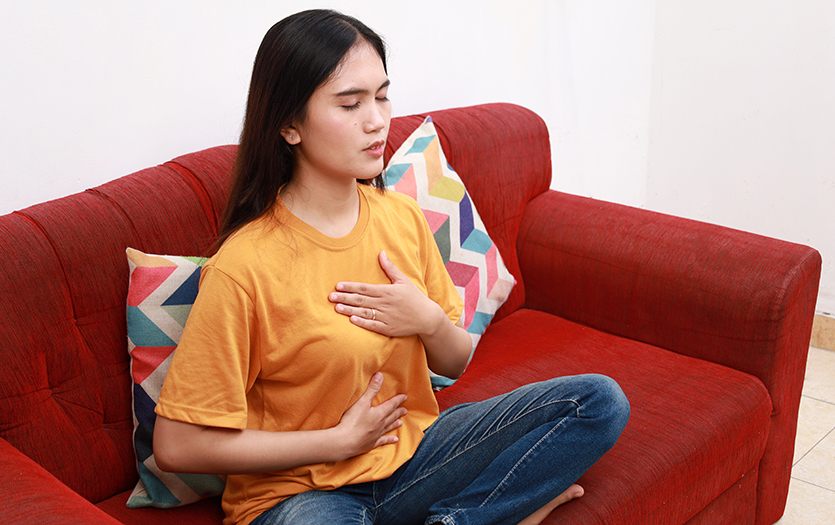
This post was written by Ravi Malpani, MD, Internal Medicine Resident.
What kind of physical symptoms can you experience?
People having a panic attack, might notice:
- Rapid heartbeat (palpitations)
- Sweating or chills
- Shortness of breath or hyperventilation
- Chest pain
- Dizziness or light-headedness
- Nausea or stomach discomfort
- Tingling or numbness in the hands and feet
- Fear of losing control or “going crazy”
- Feeling detached from reality or yourself (derealization or depersonalization)
What kind of cognitive symptoms can you experience?
People having a panic attack, might notice:
- Fear of dying
- Fear of losing control
- A sense of detachment from your environment
- A sense of detachment from your feelings, thoughts, or actions
Why do panic attacks happen and how long do they last?
The exact cause of panic attacks is not always clear, but it can be linked to the body's fight-or-flight response. This is the natural reaction that occurs when the brain perceives a threat, releasing adrenaline to help the body prepare to either confront the danger or escape it.
Panic attacks can also be associated with specific mental health conditions, such as panic disorder, generalized anxiety disorder and phobias. Triggers include high levels of stress, major life changes or trauma. Some individuals may have a genetic predisposition to panic attacks or anxiety disorders.
These attacks can last from a few minutes to half an hour. For most individuals, symptoms can come out of nowhere, without any clear trigger. Some may find that certain situations or stressors, such as public speaking or crowded places, can trigger attacks.
Managing panic attacks
Although panic attacks are uncomfortable and scary, they are not life-threatening. Try these strategies to get relief:
1. Breathing exercises
One of the first things you may notice during a panic attack is rapid, shallow breathing, which can make symptoms worse. Learning to control your breathing can reduce the severity of a panic attack and help calm your body.
2. Muscle relaxation
Panic attacks often cause muscle tension. Tensing and then relaxing different muscle groups in the body to reduce tension and promote relaxation. This can help reduce the physical symptoms of panic attacks.
3. Grounding techniques
Grounding techniques are a way to anchor yourself in the present moment and can be helpful when you feel overwhelmed by panic. This can interrupt the cycle of thoughts that worsen panic attacks.
Try the 5-4-3-2-1 method:
- 5: Look around and name five things you can see.
- 4: Name four things you can touch.
- 3: Listen and identify three sounds you can hear.
- 2: Notice two things you can smell.
- 1: Focus on one thing you can taste.
4. Avoid avoidance behaviors
It’s natural to want to avoid situations that might trigger a panic attack, but avoidance can make the problem worse. Over time, avoidance behaviors can increase anxiety. Gradual exposure to situations that can trigger panic attacks, with the help of a therapist if necessary is important.
Long-term prevention
In addition to these strategies for managing panic attacks in the moment, consider lifestyle changes that can help prevent them in the future:
- Regular physical activity: Exercise helps regulate stress and anxiety.
- Healthy diet: Avoid excessive caffeine and sugar, which can trigger panic symptoms.
- Adequate sleep: Aim for 7-9 hours of quality sleep each night.
- Mindfulness and relaxation practices: Techniques such as meditation, yoga and mindfulness can reduce overall stress and anxiety levels.
Seek professional help
If panic attacks are frequent and severely impact your daily life, seek help from a healthcare provider. Cognitive-behavioral therapy (CBT) is an effective treatment for panic attacks and panic disorder. Medications such as selective serotonin reuptake inhibitors (SSRIs) or benzodiazepines may also be prescribed for short-term relief or long-term management.
If you need immediate mental health assistance, call the PBHI HelpLine at 260-471-9440 or toll free at 800-284-8439, anytime 24 hours a day.



